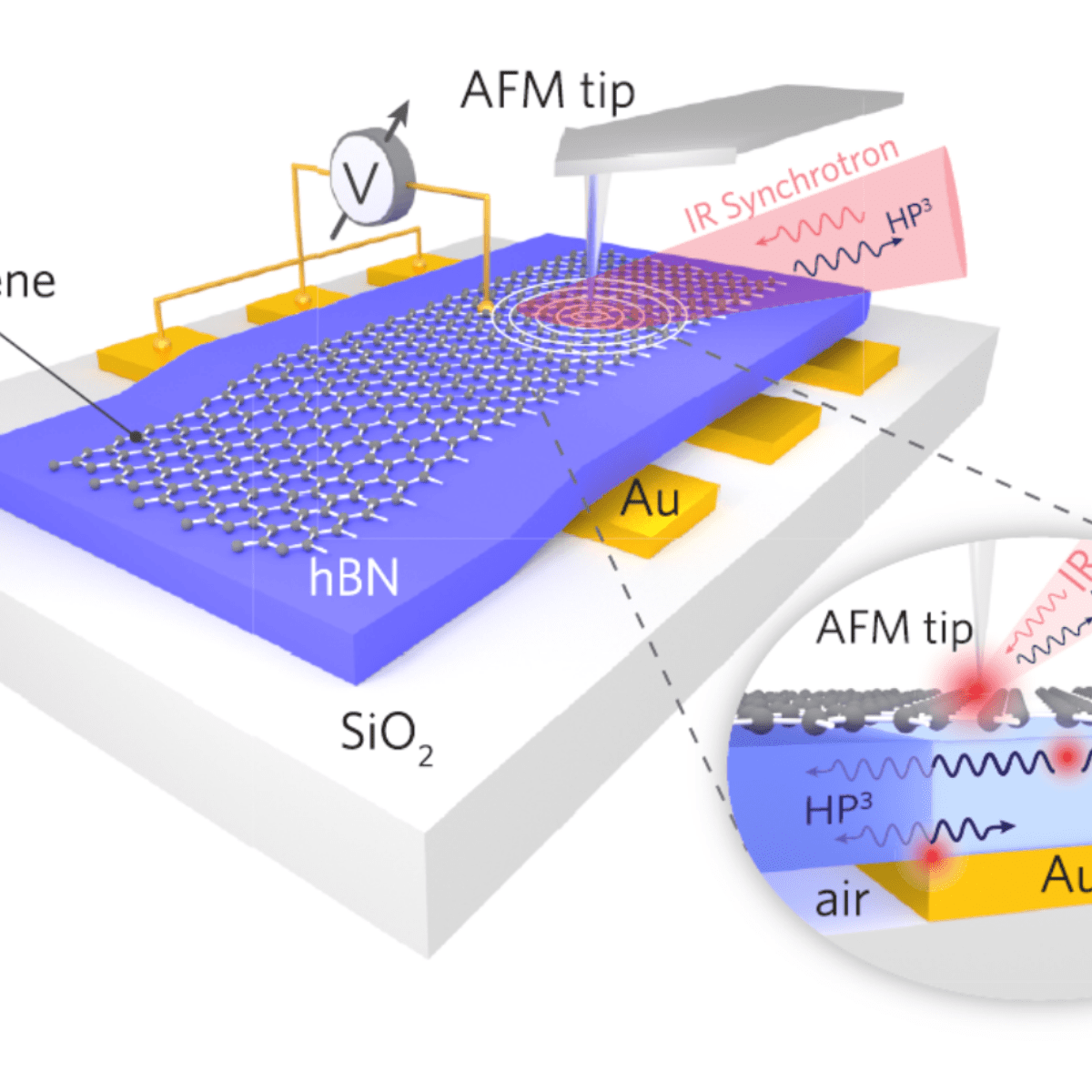
Research evaluates combination of graphene and hexagonal boron nitride for opto-electronic devices of the future
Photonics is the science that investigates phenomena related to light, such as its generation, transmission and detection. Its applications can be found in a wide range of technologies that directly impact our daily life: lasers used in surgery, fiber optics for data transmission, and screens of high definition TVs and smartphones. These advances are only possible by the in-depth knowledge of the interaction of light with supercompact electronic components.
The latest frontier of photonics is the production of nanoscale devices capable of transmitting information by means of light signals, called nanophotonic or optoelectronic devices. When compared to the already established electronic components, the new nanodevices will carry a greater volume of information at a faster pace.
Today, several research groups around the world are dedicated to building ultrathin photonic devices with outstanding performance. However, such development requires materials that have appropriate characteristics, besides being efficient and inexpensive.
One of the materials of interest is graphene, formed by a single layer of carbon atoms obtained from graphite. Graphene is a conductor with excellent properties that can be easily altered by applying electric fields or light. In addition, several other interesting structural, electronic and optical properties can be obtained by combining graphene with other materials. One of these combinations under study is the system formed by graphene in contact with a hexagonal boron nitride crystal (hBN), also a few molecules thick. This system allows the control of light transport on a nanometer scale.
Therefore, the knowledge of its optical properties plays a key role in the optimization of nanophotonics-based technologies.In search of a better understanding of the interaction between these materials, researchers from the Brazilian Synchrotron Light Laboratory (LNLS) and collaborators made an important advance in the understanding of light transport in ultracompact devices based on graphene and hBN.
In the paper published in the important Nano Letters [1] journal, the group investigated confinement and interaction of light with interfaces and internal borders of the device, in regions much smaller than a thousandth of a millimeter.According to the researchers, the study demonstrates an unprecedented control of the electromagnetic activity of these devices via external electrical stimulation and lays a solid foundation for future developments of nanophotonic devices that will integrate widely used equipment in society.

Schematics of the Graphene-hBN and the experimental analysis using infrared nanospectroscopy. Reprinted with permission from Nano Lett. 2019, 19, 2, 708-715. Copyright 2019 American Chemical Society.
Source: [1] Francisco C. B. Maia, Brian T. O’Callahan, Alisson R. Cadore, Ingrid D. Barcelos, Leonardo C. Campos, Kenji Watanabe, Takashi Taniguchi, Christoph Deneke, Alexey Belyanin, Markus B. Raschke, and Raul O. Freitas, Anisotropic Flow Control and Gate Modulation of Hybrid Phonon-Polaritons, Nano Letters 2019 19 (2), 708-715. DOI: 10.1021/acs.nanolett.8b03732
Research develops nanostructured material with high oxygen storage and release capacity for the improvement of catalytic converters
Results contribute to improve processing technology and valorization of this resource